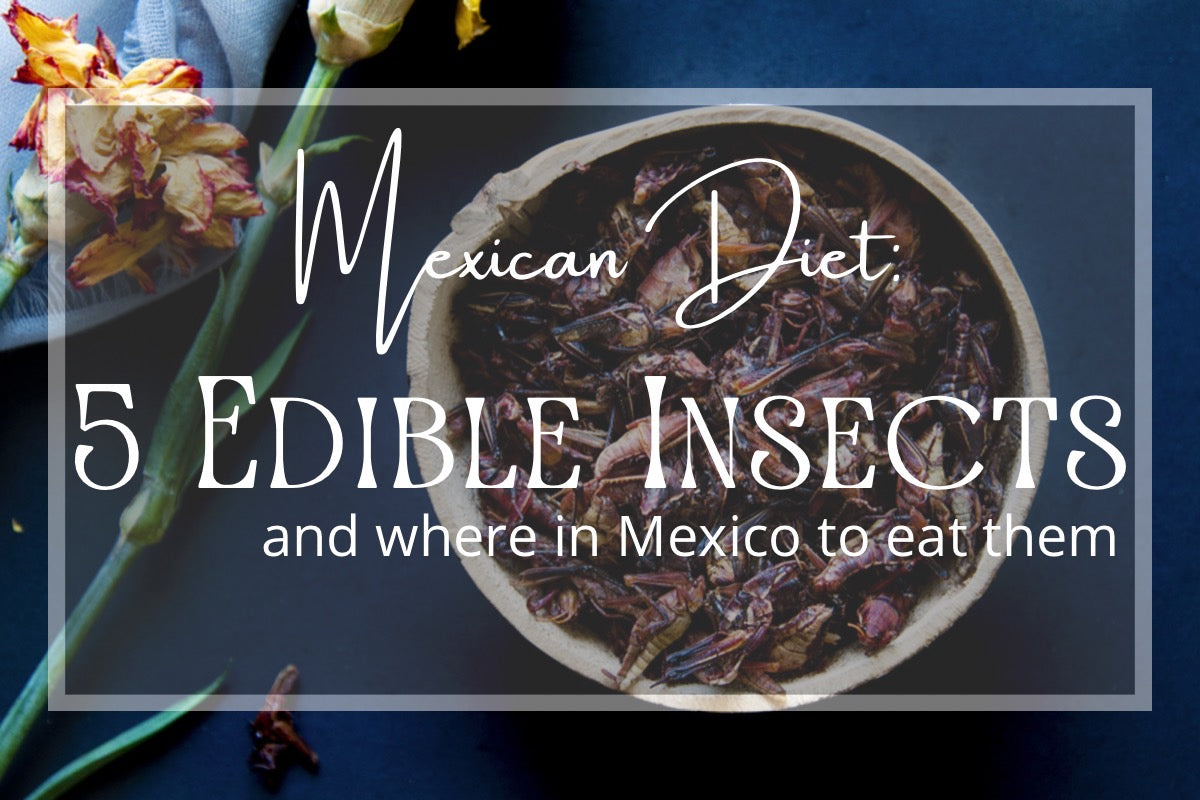When we think of insects, the last thing that comes to mind is food. However, in Mexico insects have been part of our diet for hundreds of years. Our ancestors took it upon themselves to turn these high-protein little creatures into delicious and nutritious delicacies.
Since pre-Hispanic times, insects have been a fundamental part of the Mexican diet, because they are delicious and have a high protein content. Fray Bernadino de Sahagún, for example, documented in the Florentine Codex 96 species of edible insects at that time (XVI century). However, Mexico is currently one of the richest countries in edible insects with 549 species, accounting for almost a third of the 1,681 species of insects suitable for food worldwide!
Within Mexico, the southern, central, and southeastern states are the main producers and consumers of insects. Some examples are aphids, beetles, butterflies, flies, grasshoppers, maguey worms, jumiles, and escamoles. Its consumption, far from being considered a food of last resort, is done for its taste and tradition; people describe them as a clean, tasty, and nutritious food that is also in abundance. And those who eat them seem to be right as these are highly nutritious and healthy food sources, high in fat, protein, vitamins, fiber, and minerals, and are even better for humans than processed beef, pork, and chicken.
Today we highlight Mexican dishes made with insects so that you can challenge your knowledge of our traditional cuisine—and your tastebuds’ bravery! Do not forget to leave us a comment telling us which ones you would try and which ones you have already tried!
Chicatana Ants, Oaxaca
The chicatanas are the queens of the well-known “arriera ants” of the Mixtec region. These insects belong to the species Atta mexicana and A. Cephalotes. The chicatanas are collected during the first days of rain because that is when they reproduce. At this time of year, the queen ants emerge from their nests to be fertilized.
Those who collect these ants must get up very early. Some choose to wait for the ants to come out on their own, others destroy the nests. It is important that the anthills are covered so that the ants can regenerate, and the reproduction cycle is not broken with this harvest.
Chapulines, Oaxaca (Morelos and Puebla, too)
The name chapulín comes from the Nahuatl chapōlin which means "insect that jumps like a rubber ball" and refers to nothing else than grasshoppers. Before becoming the popular Mexican snack they are, these insects are collected, seasoned with salt, lime, and chili, and finally toasted on the comal. Although this delicacy is mainly enjoyed in Oaxaca, they are also very popular in Morelos and Puebla.
Jumiles, Guerrero
Although also consumed in Morelos, Puebla, Oaxaca, the Estado de Mexico, and Distrito Federal, it is in the state of Guerrero where they play a very significant role in the diet of indigenous communities. In the city of Taxco and its surroundings, especially, eating jumiles is a deep-rooted practice; there is even a celebration called Día del Jumil (Jumil Day), held on November where all residents hike the Huixteco Hill to collect this field bug.
Jumiles are collected from October to January and can be eaten alive or toasted in corn tortilla tacos with hot sauce or beans; they are also fried and seasoned with lemon juice, salt, ground chili, parsley and onion, or prepared as a (very famous) jumil sauce.
Escamoles, Tlaxcala and Hidalgo

Escamoles are a typical pre-Hispanic dish whose name comes from the Nahuatl "azcatl" which means ant and molli which means "stew". This dish is widely consumed in the central region of Mexico and consists of ant eggs that are generally harvested from March to May.
One of the places where its "extraction" is most practiced, in addition to the state of Tlaxcala, is in the municipality of San Agustín Tlaxiaca, Hidalgo, where there is the Teotlacualli farm, dedicated to the cultivation of this small insect.

Scorpions, Durango
In tacos or as a snack, the symbol of the state of Durango is also part of the Mexican diet. With a crunchy but very similar flavor to beef, los alacranes (scorpios) are first fried and then sautéed on a griddle. Without a doubt, a scorpion taco will get a substitute for the most daring, but its peculiar flavor will be one that only the brave will be able to taste!
-
So, what do you think? Would you dare to eat them? Have you ever tried any of these insects? We would love to hear from you!
Also, as usual, don’t forget to subscribe to our newsletter if you would like to receive more articles like this one and to check out our shop to get the latest from Mexico, here are some serveware ideas to Mexicanize your table!










3 comments
Manny Cervantes
Growing up with my grandparents in Zacatecas I recall my grandmother hiring Huichol Indians to do an elaborate dance in honor of one of her sons who had been killed in a stupid fight. When she was negotiating price with Huichol leaders they offered her to snack on toasted grasshoppers (chapulines) and of course she accepted. This was in the late 1940s. Like the Yakis, according to her, the Huicholes depended on the snack on their long travels on Sierra Madre Ocidental on foot!
C. Telgard
Having traveled in Mexico for 40+ years and doing business there for over 30, I’ve encountered culinary insects frequently and embraced that very Mexican food. Chapulines in many dishes (including pizza topping!), jumiles in sauces or tacos in Taxco, and Escamoles in Hidalgo and DF. My fave is the Escamoles sautéed in garlic butter and served in freshly made tortillas with a Chipotle sauce. Yum!
Jackie Delgadillo
I love the Mexican culture, people, artesanías, your store and your articles and of course the food. But as a rather picky non-Hispanic eater, I’ll have to draw the line at trying insects as food. But those that do, enjoy. JD